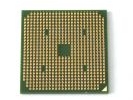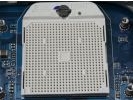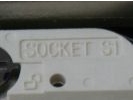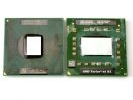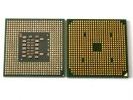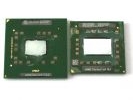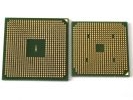Intel Pentium D 920, intel;Pentium D 930 , Intel D930
Review, Intel D920 Review , benchmark
Let??в„ўs see how Intel??в„ўs shift to 65nm Presler core has affected the youngest dual-core Intel processors. This article offers you a detailed study of the performance and overclocking potential of the new Pentium D processors. Maybe it is high time we started expressing more excitement about dual-core Intel CPUs?
Almost three months have passed since the dual-core Intel Pentium D processors on the Presler core appeared in the market. The CPUs of this type managed to get pretty widely spread since then and now you can easily buy one almost anywhere. Until today our testlab has been working mostly with the top-of-the-line Presler based processors with the price point exceeding $600
Of course, products like that are not for the mass market and are very unlikely to become the sales leaders because of that. Only dedicated hardware enthusiasts will go for them. So sooner or later we had to turn to more ???mass??? solutions from the dual-core Pentium D product family on Presler core. Especially, since they have been significantly improved. They acquired larger L2 cache than the predecessors based on the older Smithfield core. And if the slower Pentium D models could be regarded as competitors to AMD Athlon 64 X2 only thanks to their lower price, now the situation has every chance to change.
It is important that Intel decided to change the processor core of its dual-core CPUs without raising the price of the processors. According to the official price-list, the slower Pentium D models on the new core sell at exactly the same price as their predecessors based on the older 90nm core. It means that Intel has acquired a new weapon in the mainstream market segment that can help the company to win back some of the market from AMD Athlon 64 X2. On the one hand the new younger Pentium D processors cost considerably less than the best value dual-core competitor CPU ??“ Athlon 64 X2 3800+.
On the other hand, Pentium D can now boast higher performance, lower heat dissipation and greater overclocking potential due to the transition to finer 65nm manufacturing process. Are these changes enough for the users to change their mind in favor of the Intel Pentium D processor? This is exactly what we are going to find out in our today??в„ўs test session that will be devoted to two youngest Pentium D CPUs on Presler core: Pentium D 920 and Pentium D 930
Pricing of Intel D930 Review , Intel D920 Review
First of all I would like to take a look at the price-list. In order to better understand the correct disposition of the Athlon 64 X2 and Pentium D in the today??в„ўs market, we need to check out their prices. The official price of the youngest Presler based CPU, Pentium D 920, is $241. Pentium D 930 is priced at $316. The least expensive competitor??в„ўs dual-core solution, AMD Athlon 64 X2 3800+, sells at $301. It means that this processor is most likely to be a direct competitor to Pentium D 930. As for Pentium D 920, it is the today??в„ўs cheapest dual-core desktop processor.
Moreover, in the second half of April Intel is planning o lowering the prices of its dual-core CPUs. After that both, Pentium D 920 and Pentium D 930, will drop down to $209. No doubt that AMD will respond to this measure with an inevitable price reduction for its Athlon 64 X2. However, we still believe that Intel will retain the title of the manufacturer of the world??в„ўs most affordable dual-core processors.
Pentium D 920 and Pentium D 930 feature a pretty typical exterior looks. They are based on the Presler core revision B1, which is the only revision available at this time. Now we will only dwell on the features of the Pentium D 920 and Pentium D 930 processors that are given in the table below:
| | Pentium D 920 | Pentium D 930 |
| Frequency | 2.8 GHz | 3.0 GHz |
| Packaging | 775-pin PLGA | 775-pin PLGA |
| Vcore | 1.25-1.4 V | 1.25-1.4 V |
| Bus frequency | 800 MHz | 800 MHz |
| Typical heat dissipation | 95 W | 95 W |
| Core stepping | B1 | B1 |
| Max . typical case temperature | 63.4o C | 63.4o C |
| L2 cache | 2 MB + 2 MB | 2 MB + 2 MB |
| Production process | 65 nm | 65 nm |
| Hyper -Threading Technology | None | None |
| EM64T (Enhanced Memory 64 Technology) | Yes | Yes |
| EIST (Enhanced Intel SpeedStep Technology) | None | None |
| VT (Virtualization Technology) | Yes | Yes |
These processors feature SL94S and SL94R S-Spec. These are the today??в„ўs only models available until Intel starts shipping CPUs with Presler C1 core stepping. This should happen next month. The launch of the new core stepping should also eliminate the major drawbacks of the B1 core stepping and reduce the heat dissipation of the top Pentium D models. As a result, Intel will be able to release faster models within the same family with the nominal clock rate reaching 3.6GHz. However, the slower Pentium D processor models will be the last ones to acquire the new C2 core stepping. As for the Pentium D 920, this buddy will never exist with the C1 core stepping at all.
The working frequencies of the Pentium D 920 and Pentium D 930 are 2.8GHz and 3.0GHz respectively. The CPUs support 800MHz system bus, so they can be used in any mainboards that support dual-core processors in general. Here I have to stress that these processors boast relatively low heat dissipation. Thanks to 65nm process, the youngest Pentium D CPUs turned out considerably less power hungry than their predecessors. However, when we compare them to the competitors from AMD, they will still be dissipating too much heat to be the winners in this parameter. For example, here are some results of the heat dissipation test we carried out for the youngest dual-core processor models from Intel and AMD:
| | Power consumption
in idle mode | Power consumption
under workload |
| AMD Athlon 64 3800+ | 11.4 W | 65.0 W |
| Intel Pentium D 930 | 40.8 W | 103.2 W |
| Intel Pentium D 920 | 39.6 W | 100.2 W |
However the heat dissipation of the Pentium D 920 and Pentium D 930 is noticeably smaller than what the top Pentium 4 CPUs on Prescott core would demonstrate. So, we have every right to conclude that Pentium D 920 and Pentium D 930 do not set any specific requirements to the
Among the distinguishing features of these processors we should definitely mention large L2 cache memory of 4MB total (2MB for each core). As you already know, dual-core Pentium D processors do not use the entire available L2 cache memory at once. At this time only the mobile Intel Core processors have shared L2 cache memory. Another peculiarity of the Pentium D processor is the absence of Hyper-Threading support. Although it is theoretically implemented in the Presler core, it is truly activated only in extremely expensive Pentium Extreme Edition CPUs. However, Pentium D 920 and Pentium D 930 fully support x86-64 64-bit extensions and Virtualization Technology.
I would like to specifically point out that Presler processors on B1 core stepping do not support Intel Enhanced SpeedStep technology. At the same time, these processors do not support the entire Demand Based Switching set, i.e. Enhanced HALT State and Thermal Monitor 2. Although the minimal multiplier Presler processors theoretically support equals 12x, power saving technologies will only be implemented in the C1 core stepping.

